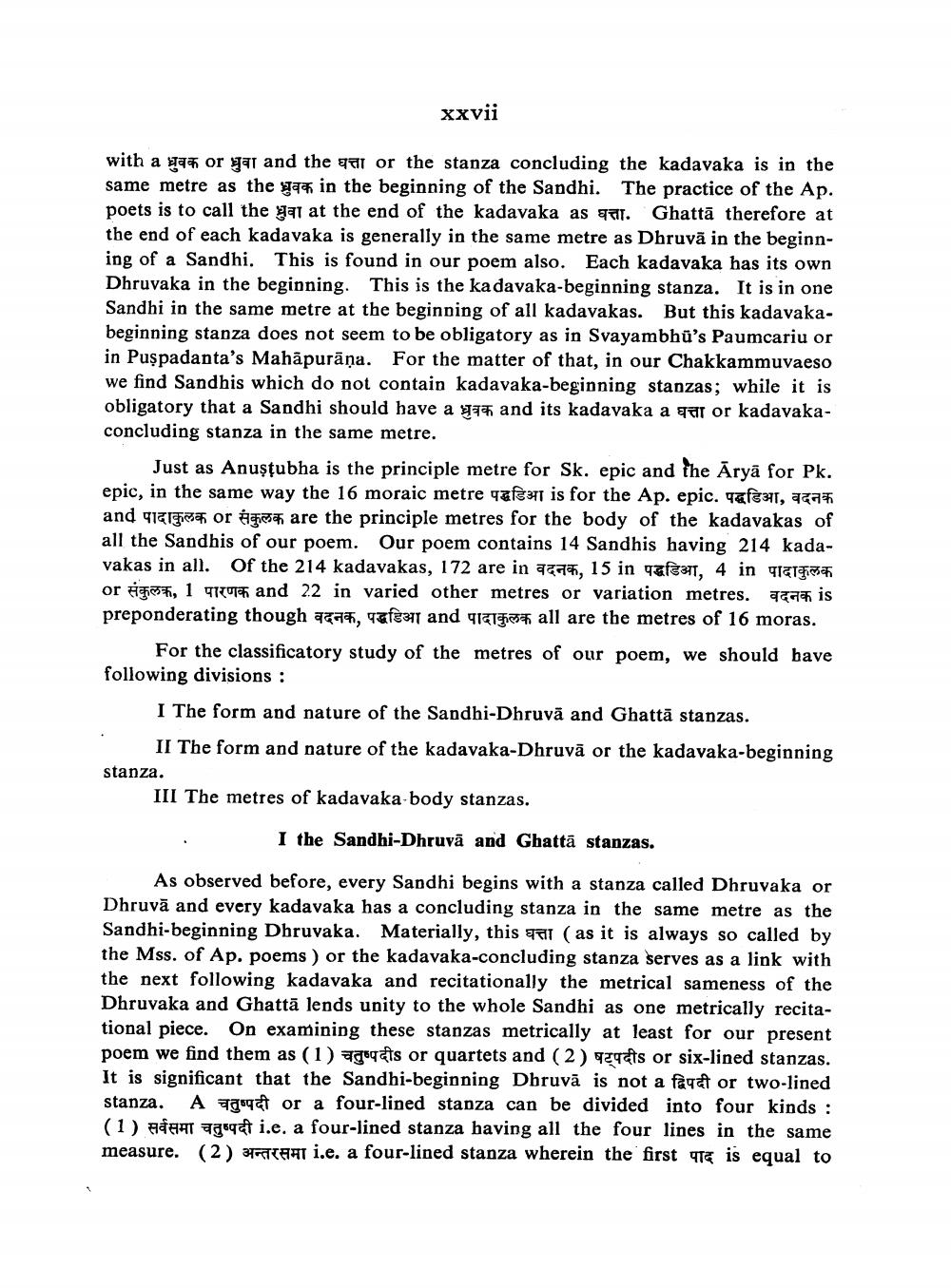________________
xxvii
with a san or yar and the gal or the stanza concluding the kadavaka is in the same metre as the 997 in the beginning of the Sandhi. The practice of the Ap. poets is to call the gal at the end of the kadavaka as 71. Ghattā therefore at the end of each kadavaka is generally in the same metre as Dhruvā in the beginning of a Sandhi. This is found in our poem also. Each kadavaka has its own Dhruvaka in the beginning. This is the ka davaka-beginning stanza. It is in one Sandhi in the same metre at the beginning of all kadavakas. But this kadavakabeginning stanza does not seem to be obligatory as in Svayambhu's Paumcariu or in Puşpadanta's Mahāpurāņa. For the matter of that, in our Chakkammuvaeso we find Sandhis which do not contain kadavaka-beginning stanzas; while it is obligatory that a Sandhi should have a 47 and its kadavaka a tal or kadavakaconcluding stanza in the same metre.
Just as Anuştubha is the principle metre for Sk. epic and the Aryā for Pk. epic, in the same way the 16 moraic metre qaft is for the Ap. epic. qafat, agan and 911 or Agrest are the principle metres for the body of the kadavakas of all the Sandbis of our poem. Our poem contains 14 Sandhis having 214 kadavakas in all. Of the 214 kadavakas, 172 are in 9977, 15 in qafat, 4 in qali or संकुलक, 1 पारणक and 22 in varied other metres or variation metres. वदनक is preponderating though वदनक, पद्धडिआ and पादाकुलक all are the metres of 16 moras.
For the classificatory study of the metres of our poem, we should have following divisions :
I The form and nature of the Sandhi-Dhruvā and Ghattā stanzas.
II The form and nature of the kadavaka-Dhruvā or the kadavaka-beginning stanza. III The metres of kadavaka body stanzas.
I the Sandhi-Dhruvā and Ghattā stanzas.
As observed before, every Sandhi begins with a stanza called Dhruvaka or Dhruvā and every kadavaka has a concluding stanza in the same metre as the Sandhi-beginning Dhruvaka. Materially, this shit (as it is always so called by the Mss. of Ap. poems ) or the kadavaka-concluding stanza serves as a link with the next following kadavaka and recitationally the metrical sameness of the Dhruvaka and Ghattā lends unity to the whole Sandhi as one metrically recitational piece. On examining these stanzas metrically at least for our present poem we find them as (1) ageats or quartets and (2) gets or six-lined stanzas. It is significant that the Sandhi-beginning Dhruvā is not a faqat or two-lined stanza. A 995947 or a four-lined stanza can be divided into four kinds : (1) Ada acqat i.e. a four-lined stanza having all the four lines in the same measure. (2) CAT i.e. a four-lined stanza wherein the first 9 is equal to




